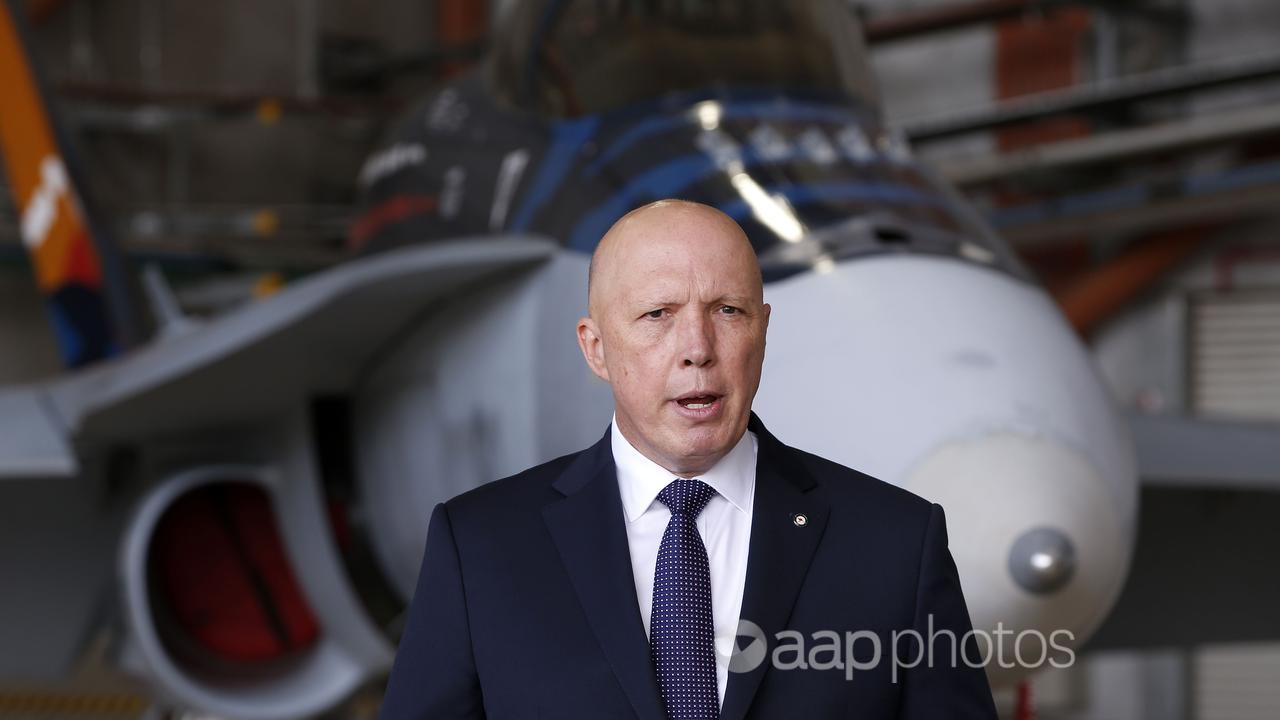Defence Minister Peter Dutton has questioned the opposition’s commitment to national security by claiming Labor cut “literally billions” from the Defence budget when the party was last in office.
The claim is misleading. Labor increased overall spending on Defence when in government between 2007 and 2013, both in nominal terms and real terms. However, Labor did cut $1.9 billion from the portfolio in 2012/13, its last full year in office.
Mr Dutton made the claim during an appearance on ABC’s Radio National on March 8 in response to comments made by Labor’s shadow defence minister Brendan O’Connor about the need to consider the future role of Australia’s military during natural disasters.
Mr Dutton said: “Defence has record funding. A bit ironic to hear that from Brendan (O’Connor) when (Labor) pulled literally billions out of defence when they were last in government.” (audio mark 6 min 45sec)
When contacted by AAP FactCheck about the basis of the claim, Mr Dutton’s office pointed to budget papers from Labor’s time in office without providing further information. By that measure, Mr Dutton’s claim does not stack up.
Historical Defence portfolio budget papers provide detailed figures on projected spending as well as actual spending that took place in the previous budget year.
The Australian Strategic Policy Institute (ASPI) – a think tank majority-funded by the Department of Defence and other federal government agencies – has collated these figures going back to 1997/98 (see here). Its figures include spending on the Australian Signals Directorate, which provides cyber intelligence and other capabilities and falls under the Defence portfolio.
The previous Labor government was elected on November 24, 2007, and lost office on September 7, 2013. Therefore, to judge Labor’s spending record, AAP FactCheck looked at spending from 2007/08 – the fiscal year Labor first came into office – to 2012/13, Labor’s final full year in office.
According to the ASPI figures, Defence spending rose by around $4.4 billion over that period, from $20 billion in 2007/08 to $24.4 billion in 2012/2013. Taking inflation into account, as measured by changes in the consumer price index (CPI) to 2021/22, ASPI calculated the growth in real terms to be around $2 billion.
Nevertheless, Defence spending did drop in two individual years during that period. In 2010/11, actual Defence spending fell by around $1 billion compared to the previous year, according to the ASPI figures.
As part of the 2012/13 budget, Labor identified that it planned to cut $5.5 billion from Defence across the four-year forward estimates period (to 2015/16). In 2012/13, actual defence spending fell by $1.9 billion compared to the previous year.
Andrew Carr from ANU's Strategic and Defence Studies Centre told AAP FactCheck that Labor partially reversed the cuts the following year and so most of the planned spending decrease never eventuated.
"In their last budget, (Labor) decided they couldn't reach the deficit reduction they'd wanted, so they actually sent some of that money back to Defence," Dr Carr said in a phone interview.
"Over the term of their government, Defence spending grew. It went up from 2007 to 2010 and then goes back down, and then kind of jumps around a little bit," he said.
Mr Dutton's claim that Labor cut "billions" from the Defence budget is therefore only accurate when referring to specific budget years. Overall, defence spending went up during Labor's terms.
Defence spending has increased every year since the Coalition took power in 2013 in both nominal and real terms.
The Verdict
Between 2007/08 and 2012/13, the budget period that best matches Labor's most recent time in government, Defence spending went up by $4.4 billion in nominal terms and $2 billion in real terms.
Labor cut Defence spending twice during its time in government, first in 2010/11 and then in 2012/13. However, it is misleading to say Labor "pulled billions" from Defence spending when last in government as overall funding increased during the party's six years in office.
Misleading – The claim is accurate in parts but information has also been presented incorrectly, out of context or omitted.
* AAP FactCheck is an accredited member of the International Fact-Checking Network. To keep up with our latest fact checks, follow us on Facebook, Twitter and Instagram.
All information, text and images included on the AAP Websites is for personal use only and may not be re-written, copied, re-sold or re-distributed, framed, linked, shared onto social media or otherwise used whether for compensation of any kind or not, unless you have the prior written permission of AAP. For more information, please refer to our standard terms and conditions.


















